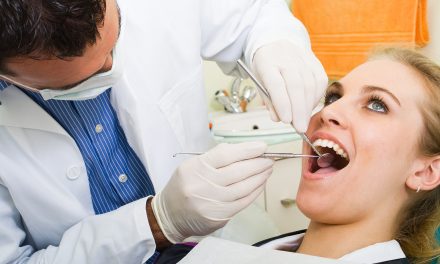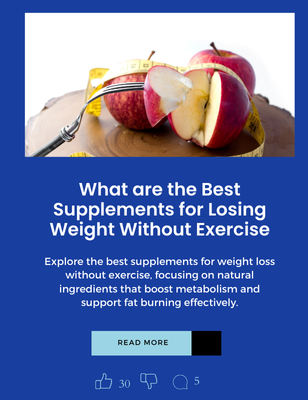Achieving a brighter smile is a common desire, and doing so in a natural way is an appealing option for those mindful of chemicals and commercial treatments. As teeth naturally yellow over time due to diet, lifestyle, and the thinning of enamel, finding ways to whiten teeth naturally has become of interest. There are a variety of methods touted for their whitening effects, from household staples like baking soda and hydrogen peroxide to dietary changes and oil pulling. While some of these methods can remove surface stains and provide mild bleaching effects, it’s important to understand the underlying causes of discoloration and to use these methods safely to avoid damage to the enamel or gums.
Natural whitening agents and daily habits can be part of a comprehensive approach to dental care, but it’s crucial to balance efficacy with safety. For instance, using too abrasive substances can harm enamel, while oil pulling with coconut oil can be a gentle alternative, as suggested in studies. Ensuring that these natural methods are used correctly and in combination with good oral hygiene practices can enhance their effectiveness while maintaining oral health. Though these natural approaches can be beneficial, they’re not always a substitute for professional dental care, particularly in cases of deep and stubborn stains.
Key Takeaways
- Natural methods can remove surface stains and contribute to a whiter smile.
- It’s essential to use natural whitening practices safely to protect enamel and gums.
- Professional dental treatments may be necessary for deeper or more resistant discoloration.
Understanding Tooth Discoloration
Before diving into methods to whiten teeth naturally, it’s essential to understand why discoloration occurs. Tooth discoloration can happen due to a variety of factors affecting the appearance of one’s smile.
Causes of Tooth Staining
Tooth staining can be a result of:
- External factors: Habits like smoking and consuming stain-causing beverages such as tea, coffee, and red wine can cause external stains on the teeth. These substances contain intense color pigments called chromogens that attach to the enamel.
- Internal factors: Aging can naturally darken teeth as the enamel thins and the dentin, a yellower material beneath the enamel, becomes more prominent. Additionally, certain medications, including antihistamines and blood pressure medications, can contribute to tooth discoloration.
Types of Tooth Stains
- Extrinsic stains: These stains are on the surface of the tooth, where the enamel is directly exposed to discoloring agents. Extrinsic stains tend to be caused by lifestyle behaviors, particularly dietary choices and oral hygiene.
- Intrinsic stains: Occurring within the tooth, intrinsic stains can result from exposure to minerals during tooth formation, such as too much fluoride, or from trauma. They are less responsive to traditional whitening methods, which include whitening toothpaste and may require professional treatment from a dentist.
Natural Whitening Agents
In pursuit of a brighter smile, many people turn to natural whitening agents, which can be used safely at home. This section explores commonplace ingredients and their mechanisms in teeth whitening.
Baking Soda and Its Effects
Baking soda, or sodium bicarbonate, is a mild abrasive that can help remove surface stains on teeth. Its natural whitening properties, when used correctly, contribute to a lighter tooth color. Baking soda also creates an alkaline environment in the mouth, which prevents bacteria from growing.
The Role of Hydrogen Peroxide
Hydrogen peroxide is typically recognized for its uses as a disinfectant. However, as an oxidizing agent, it is also effective in whitening teeth. It works by breaking down stain-causing molecules. One must exercise caution though; overuse could lead to enamel damage.
Oil Pulling with Coconut Oil
The traditional practice of oil pulling can be performed with coconut oil. Swishing a tablespoon of coconut oil through the teeth may help reduce plaque and bacteria, leading to a whiter smile. This method relies on the oil’s natural fatty content to pull impurities from the oral cavity.
Acidic Solutions: Lemon and Apple Cider Vinegar
Acidic solutions like lemon juice and apple cider vinegar can be used sparingly as natural whitening agents. They both contain acids that can potentially brighten teeth. However, frequent use can erode enamel, so these should be used with extreme caution.
Strawberry Magic: Enzymes and Antioxidants
Strawberries might lend more than just their color to a refreshing snack; they contain enzymes and antioxidants that could assist in whitening teeth. Malic acid, found in strawberries, naturally helps to remove surface discoloration on tooth enamel.
Daily Habits for Whiter Teeth
Adopting daily habits for dental hygiene can make a significant impact on the brightness of one’s smile. Consistent and correct brushing, regular flossing, and mindful dietary choices are cornerstones in maintaining teeth that are not only healthy but also aesthetically pleasing.
Proper Brushing Techniques
Using the right toothbrush: Opt for a soft-bristled brush to prevent damage to the enamel and gums. Electric toothbrushes can be more effective at removing stains due to their consistent motion and pressure.
Brushing technique:
- Place the toothbrush at a 45-degree angle to the gums.
- Move the brush in short (tooth-wide) strokes.
- Brush the outer surfaces, then the inner tooth surfaces, and finally the chewing surfaces.
- Use the “tooth by tooth” approach to ensure thorough cleaning.
The Importance of Flossing
Flossing daily is crucial in removing plaque and food particles that a toothbrush cannot reach. It helps to:
- Prevent the buildup of plaque, which can lead to tartar.
- Reduce the risk of tooth decay and gum disease, which can affect tooth color.
Flossing technique:
- Use about 18 inches of floss, winding most around one of your middle fingers, and the rest around the opposite middle finger.
- Hold the floss tightly between your thumbs and forefingers.
- Gently guide the floss between teeth using a rubbing motion.
- Curve the floss around the base of each tooth, ensuring you go beneath the gumline.
Dietary Choices to Prevent Stains
Certain staining foods and beverages can discolor teeth. To prevent stains, it is recommended to:
- Limit the intake of coffee, tea, red wine, and dark-colored sodas.
- Consume a diet rich in fruits, vegetables, and water to help clean the teeth and gums.
When consuming staining beverages:
- Use a straw when possible to minimize contact with the teeth.
- Rinse the mouth with water after consumption to reduce the potential for staining.
By implementing these daily habits, individuals can work towards a whiter smile while maintaining the overall health of their teeth and gums.
Safe Practices for Natural Teeth Whitening
When considering natural teeth whitening methods, it’s essential to prioritize safe practices that protect your oral health by maintaining enamel integrity and avoiding gum irritation.
Understanding Safe Concentrations
When using products like hydrogen peroxide, a common bleaching agent, they should ensure that the concentration is low enough to prevent gum disease and tooth sensitivity. For example, using a diluted hydrogen peroxide solution can offer a whitening effect without the adverse effects associated with high-concentration bleaching agents.
Avoiding Enamel Damage and Gum Irritation
To prevent enamel damage, individuals should avoid abrasive substances that can erode tooth surfaces. Techniques such as oil pulling with coconut oil can help remove surface stains safely, whereas brushing with too much force or with overly abrasive substances like some baking sodas can wear down both enamel and dentin.
Using toothpaste with fluoride can assist in remineralizing the enamel, thus reducing the risk of gum irritation. Additionally, one should be cautious about the frequency of natural whitening methods to avoid the risk of overuse, which could lead to enamel degradation over time.
Commercial Natural Whitening Products
For those looking for natural solutions to teeth whitening, commercial products such as whitening toothpastes and strips can provide an alternative to professional treatments. Many of these products contain ingredients like baking soda or activated charcoal, known for their whitening properties.
Whitening Toothpaste
Whitening toothpastes are a popular choice for everyday use, typically containing a mild abrasive like baking soda that helps remove surface stains without harsh chemicals. Some toothpaste may also contain natural enzymes or other agents that can assist in removing stains. Arm & Hammer offers a product with baking soda and peroxide, which are effective yet gentle on the enamel.
- Natural Ingredients: Baking Soda, Activated Charcoal
- Example Products: Arm & Hammer Advance White
Whitening Strips and Gels
Whitening strips and gels often rely on peroxide-based gels to oxidize and break down stains on the teeth’s surfaces, offering more intensive whitening than toothpaste alone. While not all are strictly natural, there are products with more natural approaches, incorporating ingredients like coconut oil and activated charcoal. Dr. Brite provides an advanced peroxide whitening system that aims to deliver professional results with carefully controlled usage for those interested in peroxide-based whiteners.
- Active Whitening Agents: Peroxide Gel, Coconut Oil, Activated Charcoal
- Example Products: Dr. Brite Advanced Whitening System
Professional Care Vs. Natural Methods
Choosing between professional dental care and natural methods for teeth whitening depends on the individual’s dental health, preferences, and the desired level of whiteness. Professional treatments often offer faster, more dramatic results, while natural methods are more gradual and can be done at home.
When to Visit a Dentist
When considering teeth whitening, a dentist should be consulted to ensure dental health is apt for the procedure. Professional teeth whitening performed in clinical dentistry settings is ideal for those looking for immediate and noticeable changes. Dental cleanings are recommended as a foundation for any whitening treatment, ensuring teeth are free from plaque and tartar. A dentist can assess the individual’s oral health and suggest the best approach to whitening.
Comparing Treatments and Efficacies
| Treatment Type | Efficacy | Treatment Time |
|---|---|---|
| Professional Whitening | High | 1-2 hours |
| Natural Methods | Moderate to Low | Several weeks to months |
Professional teeth whitening uses high-grade bleaching agents that produce visible results in one to two hours, often with specialized lights or lasers. In contrast, natural whitening methods such as baking soda or hydrogen peroxide typically require ongoing application for noticeable effects over several weeks to months. Dentists can perform whitening treatments that involve multiple sessions for maximum impact, while natural methods require consistent daily effort by individuals for gradual changes in tooth color.
Maintaining Whiteness After Treatment
Achieving a brighter smile is only the beginning; maintaining the newfound whiteness of one’s teeth requires continued care and adherence to best practices in oral hygiene and professional dental cleaning.
Ongoing Oral Hygiene Practices
To preserve the whiteness of one’s teeth post-treatment, individuals should integrate comprehensive oral hygiene routines into their daily lives. This involves:
- Brushing Twice Daily: Using toothpaste approved by the American Dental Association ensures the removal of surface stains and plaque.
- Flossing Regularly: Daily flossing prevents plaque buildup between teeth, which can lead to staining.
Additionally, incorporating foods that naturally clean and strengthen the teeth, such as crunchy fruits and vegetables, is beneficial.
Regular Dental Visits
Regular dental cleaning and check-ups play a crucial role:
- Biannual Check-ups: Visiting the dentist every six months for a professional cleaning helps remove entrenched stains and plaque that regular brushing can’t.
- Customized Care: Dentists can provide personalized advice on maintaining oral health based on one’s specific condition and the type of whitening treatment used.
Maintaining an ongoing relationship with a dentist ensures one stays on top of their oral health as they provide guidance and interventions when new or recurring issues arise.
Addressing Tooth Sensitivity
When whitening teeth naturally, it’s essential to consider the health of one’s enamel and address possible tooth sensitivity. Effective management ensures comfort and better oral health.
Natural Remedies for Sensitive Teeth
Tooth sensitivity often arises when dentin—the layer beneath the enamel—becomes exposed, leading to discomfort. Fluoride can be a natural ally in this fight. It helps remineralize enamel and reduces pain by blocking the tiny tubules in the dentin. A toothpaste containing fluoride or a mouthwash can be a natural remedy to alleviate sensitivity.
Another method to consider is desensitizing agents in some over-the-counter dental care products. These agents help to shield nerve endings from irritants by forming a protective barrier.
In addition, incorporating teeth-friendly foods into one’s diet can help. Crunchy fruits and vegetables facilitate saliva production that protects teeth, and dairy products rich in calcium can strengthen enamel.
Sensitivity Following Whitening Practices
Post-whitening sensitivity is not uncommon, and it’s frequently a result of enamel thinning during the whitening process. To mitigate this, using a lower concentration of whitening agents like hydrogen peroxide can be helpful. Research suggests a more down treatment time to limit potential damage to the teeth while still achieving the desired whitening effect.
For individuals experiencing tooth sensitivity after using natural whitening methods can try using toothpaste specifically formulated for sensitive teeth. Such toothpaste often includes compounds that protect nerve endings in the teeth from further irritation. Managing gum health is also vital, as conditions like gingivitis can exacerbate tooth sensitivity. Regular brushing with a soft brush, flossing, and using an antiseptic mouthwash can aid in preventing gingivitis, thus reducing sensitivity.
Risks and Limitations of Natural Whitening
While natural teeth whitening methods can be appealing due to their simplicity and the attractiveness of non-chemical approaches, there are essential considerations to be aware of. These include potential adverse side effects and the inherent limitations of natural remedies.
Potential Side Effects and Precautions
Natural whitening methods often involve substances that can harm tooth enamel if misused. Acidic foods such as lemons and apple cider vinegar might offer some whitening effect but can also contribute to tooth decay and enamel damage. Dark sodas, though not a natural whitening method, serve as a comparison for damage that similarly acidic ingredients can cause. Individuals must take precautions when using these methods to avoid cavities and enamel erosion.
Another potential side effect is the reaction to natural substances, which can vary from person to person. For instance, specific remedies may inadvertently cause irritation or sensitivity in the gums or teeth. Those with a history of oral health issues should consult a dental professional before beginning any new whitening regimen.
Understanding the Limits of Natural Methods
There’s a limit to how much natural methods can accomplish, particularly compared to professional treatments. The natural aging process of teeth often includes yellowing, which may be mitigated somewhat but not entirely reversed by natural remedies. Additionally, while some studies suggest a possible link between oral health and systemic conditions like cancer, natural whitening methods are not proven to impact such diseases. They are largely cosmetic and do not address underlying health issues.
When using natural methods to whiten teeth, it’s essential to set realistic expectations and understand that the results may not be as dramatic or enduring as professional options. Natural whitening is typically more subtle and may require ongoing application to maintain the effect.
Myths and Facts About Natural Teeth Whitening
Myth: Natural substances like lemon juice and strawberries can safely whiten teeth.
Fact: These acidic fruits can erode tooth enamel, leading to potential harm rather than safe whitening.
Myth: Baking soda is too abrasive for teeth and should be avoided entirely.
Fact: While it is abrasive, baking soda can be an effective whitening agent when appropriately used, thanks to its natural alkaline properties that help remove surface stains.
Myth: All teeth whitening methods are safe if they claim to be natural.
Fact: Even natural products can be harmful if misused. Understanding the effects and proper use of substances like hydrogen peroxide, a natural bleaching agent found in many whitening products, is essential.
- Oil Pulling: An ancient practice that involves swishing oil in the mouth. It is claimed to offer antibacterial and antimicrobial benefits, but its efficacy for whitening is not scientifically substantial.
- Activated Charcoal: Often advertised for its natural whitening properties, charcoal can be abrasive and may lead to enamel wear over time.
- Bleaching Agents: Hydrogen peroxide and carbamide peroxide are commonly used chemicals for bleaching teeth. Their whitening effects are due to the oxidation process, which should be monitored in concentration to avoid damage to the teeth and gums.
Using natural methods for teeth whitening requires carefully considering their benefits and potential risks. It is essential to consult with dental professionals before using products with bleaching chemicals or abrasive materials to ensure they are used safely and effectively.
Frequently Asked Questions
In exploring natural teeth whitening methods, people frequently ask about safe practices that avoid enamel damage, offer quick results, and can be done using household items. The following are reliably sourced answers to these common queries.
What natural methods can I use to whiten my teeth without causing enamel damage?
Natural teeth whitening can be achieved through methods like oil pulling with coconut oil, using baking soda as a toothpaste, and adopting a diet high in fruits and vegetables. These methods are gentle and less likely to harm the enamel. Healthline’s guide on teeth whitening is insightful for in-depth information on these practices.
Can I achieve instant teeth whitening using home remedies, and how?
Instant teeth whitening at home is not feasible as most natural methods require consistent application over time. For example, brushing with baking soda and water paste may gradually lighten stains after several uses.
Is it possible to make yellow teeth white naturally, and which household items are practical?
Turning yellow teeth white naturally is possible with sustained use of certain household items like baking soda, which acts as a mild abrasive capable of removing surface stains. Cleveland Clinic’s website also mentions the effectiveness of hydrogen peroxide as a natural bleaching agent.
Are there ways to whiten teeth overnight using natural substances?
Whitening teeth overnight with natural substances may not be achievable, as natural remedies generally take longer to show results. Consistent methods such as brushing with hydrogen peroxide or using a strawberry and baking soda paste can gradually whiten teeth over time.
What techniques can help whiten aging or discolored teeth without commercial products?
Techniques to whiten aging teeth include maintaining excellent oral hygiene with regular brushing and flossing, using homemade toothpaste with baking soda, and consuming crunchy fruits and vegetables that promote saliva production and help clean the teeth.
How can hydrogen peroxide be used safely for teeth whitening at home?
Hydrogen peroxide can be used safely by diluting it with water and using it as a mouthwash or mixing it with baking soda to make toothpaste. Using a low concentration (usually 3%) is essential to avoid damaging the enamel. Using hydrogen peroxide in higher concentrations should be done cautiously, and Healthy and Natural World provides further guidance on this topic.





















